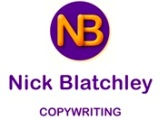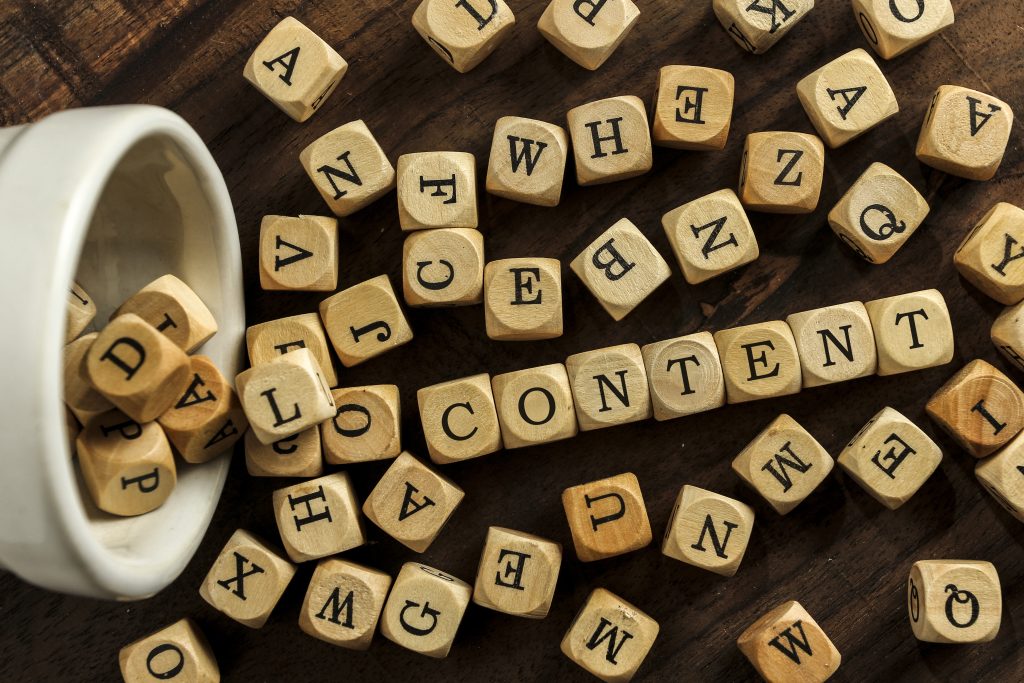Like most people in the marketing sector, I talk a lot about marketing content and tend to assume everyone knows what I mean. Perhaps if you’re just getting into the process, though, it might not be so obvious.
Marketing covers a wide range of media and situations. The most obvious, perhaps, are written content, images and video, but you can also market your business with branded gifts, or else decorate clothes or vehicles with your logo. And even talking to people about what you do counts as marketing.
There are many excellent suppliers of all these, but of course I specialise in written marketing content. So what exactly does that include?
Website
Your website is both your shop window and an essential component of your sales funnel. It can be as small as a single page or as large as Amazon, but a typical website for a small business is likely to have a Home page, an About page, one or more pages for Services and/or Products, and a Contact page:
- Home: brief introductions to other pages, with links. Home page content should tantalise, rather than giving everything away.
- About: possibly the most important page, this tells readers who you are, either as an individual or as a corporate identity. Or both.
- Services: an overview of your range of services, with subpages for separate services. Focus on how the customer benefits, rather than on what you do.
- Products: similarly, an overview with various categories on subpages. A mixture of images, videos and brief descriptions, with technical details, if appropriate.
- Contact: as many different ways of contacting you as possible.
The tone of the writing should reflect how you want to come over (e.g. personal or corporate) but it should be broadly consistent throughout.
Blog
Another feature of your website is normally your blog. Blogs are your way of engaging your audience, demonstrating your expertise and adding regular new content to your website — which Google loves.
A blog can be aimed at informing and educating your audience about your sector, setting out your opinions on relevant issues, unveiling new products, services or offers, or even providing something mildly amusing. The aim can be to inform, engage or entertain — but not to sell. At least, not right away.
A blog can be as long as it needs to be to get your points over, although normally not shorter than 300-400 words. The ideal length is a thorny issue, since Google likes very long posts, but there’s a risk that your audience won’t finish these. In practice, probably 500-1000 words is ideal to engage your audience. If you need it to be a lot longer, you might consider a series of blogs.
As to how often you should blog, it could be weekly, fortnightly or monthly — but, whichever you go for, it needs to be consistent.
Social Media
You need to be seen where your ideal customers hang out, and that’s likely to be social media. There are hundreds of social media platforms, and there’s no way you can keep up with all or even most of them, so the best thing is to pick out a handful that are most relevant.
This might include some, such as Instagram or YouTube, that are mainly focused on media other than written content, but the ones you’re likely to need written content for are:
- LinkedIn — essential if you’re B2B, but often good for B2C, too. LinkedIn posts should generally be professional and authoritative, but with a personal touch.
- Facebook — great for reaching the general public, but don’t forget that business owners are people too. Facebook posts can be a little more relaxed than LinkedIn, but still professional.
- Twitter — tweets are too short to convey a complete message, so you can tease the reader, encourage them to follow up with questions. But don’t forget to answer them.
Whichever platforms you use, though, remember that it’s not just about posting. Be seen, like and comment on other posts and generally engage your audience.
Newsletter
A newsletter is a great way to stay in touch with people who are already contacts but aren’t ready to buy yet. Or, alternatively, people who have bought from you in the past and may do so again in the future. Things to remember about sending out a newsletter include:
- Pick a timetable and stick to it. A newsletter can be monthly, fortnightly or even weekly (though only if you have a lot of interesting information) — but “when I get around to it” isn’t a valid schedule.
- A newsletter isn’t part of your sales strategy. It’s purpose is to remind your existing contacts that you’re there, so they remember you when they do need your services. Make your newsletter engaging, informative, entertaining — but not salesy.
- On the other hand, you can certainly include plenty of links to your website, blog, social media or anywhere you want them to check out. Also, by all means include calls to action — as long as they’re not “buy now”.
- Balance the content between text and images. You want to include interesting information, but a wall of text is less likely to engage your reader. You can even include video content, though this isn’t essential.
- Don’t stress if you don’t seem to be getting anywhere. Engage with anyone who replies, but just because you don’t get responses doesn’t mean the newsletter isn’t working. And those unsubscribes — it’s not a personal rejection. They probably wouldn’t have bought from you, anyway.
What channels do you consider most vital for your marketing? Why not leave your thoughts?

